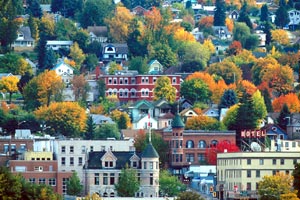Estonia
Find Eduxpress Programmes
Estonia is situated in Northern Europe and neighbours Finland, Latvia, and Russia. It is a country of striking natural beauty and stunning seaside locations, which brings together historical and modern contrasts. Estonia, a 2004 European Union (EU) entrant, has a modern market-based economy and one of the highest per capita income levels in Central Europe and the Baltic region.
Estonia belongs to the Schengen Area and has been a proud member of the euro area as of 2011. Estonia has been booming ever since adopting the euro as official currency.
The economy grew 7.6% in 2011, five times the euro area average and is the only country with a budget surplus in the Eurozone. With these examples, Estonia has become a respected member of the European Union and a role model for other EU countries.
As a prosperous and forward-thinking country, Estonia is known in Europe for its various e-solutions, flat-rate tax system, nationwide e-voting, and its innovative and open approach towards new technologies.
One of the best examples of how far Estonia's modern technology has come is Skype. It took four Estonian software developers to come up with a series of complex programmes to make the idea of free calls anywhere in the world translate to reality! The application, which is now owned by Microsoft, is still partially operated in the capital city of Tallinn.
As over half of country is covered with forest and with more than 1,000 picturesque island and lakes, Estonia makes you feel closely connected with nature and gives you endless possibilities to enjoy spending time in the clean open air. As proof, WHO (World Health Organization) ranked in 2011 Estonia 1st in worldwide in air quality.
While studying in Estonia you will be living in a modern European country with Nordic values and living standards. As a great bonus, you will find an eco-friendly attitude and breath-taking Nordic nature.
Estonia boasts a long tradition of high-quality higher education, with the first university established in 1632, thus being one of the oldest universities in Northern Europe.
Currently, Estonian universities offer more than 150 recognized degree programmes in English at Bachelor's, Master's, and PhD level with internationally recognized diplomas and scholarship possibilities. Shorter periods of study in Estonia are also available in semester or summer courses.
Estonian universities have facilitated programmes and structural changes in accordance with the European-wide Bologna Process and the creation of a common European higher education area. Local universities also place a strong emphasis on internationalization:
These activities have resulted in:
Institutions of higher education have made internationalisation a priority. The Ministry of Education and Research of Estonia and the Archimedes Foundation lead the efforts to increase mobility of scholars and research within and outside of Europe.
The Archimedes Foundation is an independent body established by the Estonian government in 1997, with the objective to coordinate and implement international and national projects for training, education, research, technological development, and innovation.
You only need a monthly budget of 300–550 EUR to cover your living costs in Estonia. As for tuition fees, these vary depending on your nationality, what you want to study, and at what level (Bachelor's, Master's, PhD). For example, PhD programmes are free for all internationals.
Most Bachelors and Masters cost between 1,650 and 7,000 EUR per academic year, with the exception of Medicine degrees, which can reach 12,000 EUR per year. Keep in mind that non-EU/EEA students sometimes pay more.
Even so, studying here is much more affordable, especially when you look at tuition rates in the US, Canada, or Australia.
The following are some of the most popular study programmes in Estonia:
These are the best Estonian universities where you should apply:
Universities in Estonia accept cross-border online applications via the DreamApply online application system.
The guidelines for applicants:
All applicants to Estonian degree programmes are required to have a qualification giving access to university studies in their home country. Applicants also need to show proof of proficiency in English. All internationally recognised language proficiency tests are accepted, though some institutions may run individual language tests. Depending on the institution and programme, there might be additional entrance tests such as an interview, written essay, portfolio etc.
It is best to contact the admissions office well before studies start in order to find out all the necessary details about application procedures, accommodation, visa regulations and other important information.
Let's take a closer look at tuition and living expenses in Estonia:
At public Estonian universities, international students encounter the following situations:
At private universities, tuition fees are higher. They also don't usually differentiate between EU and non-EU citizens.
You need around 300–550 EUR per month to live as a student in Estonia. Food and accommodation represent the largest expenses.
Here's a breakdown of average costs of living in Estonia:
STATE
Estonia is situated in north-eastern Europe, being the northernmost of the three Baltic States. It is bounded on the west and north by the Baltic Sea and on the east by Lake Peipsi and the Narva River. It is bordered on the east and southeast by Russia and on the south by Latvia. Tallinn, Estonia's capital city is only about 85 km south of Helsinki, the capital of Finland, across the Gulf of Finland. Sweden is Estonia's nearest western neighbour across the Baltic Sea.
Estonia is often referred to as a very small country. With an area of 45 000 sq. km, Estonia is in fact bigger for example than Belgium, the Netherlands, Denmark or Switzerland, but still for example five times smaller than Great Britain. Estonia stretches 350 km from east to west and 240 km from north to south. Sea islands form one tenth and lakes about one twentieth of Estonia's territory. Almost half of the Estonian territory is covered by forest and woodland.
NATUREThe image of Estonia's natural environment is shaped by the small average population per square kilometre, the country's proximity to the Baltic Sea and its location between the Eastern and the Central European bio-geographical area. That means that Estonia is a borderline area for the occurrence of many species and types of landscape. Bogs and forests, small lakes and islands offer an opportunity to experience silence and pristine nature.
The climate in Estonia is temperate and mild, characterised by warm summers and fairly severe winters. The weather is often breezy and humid due to the proximity of the Baltic Sea. Seasons in Estonia vary widely. Average temperatures range from 20.9° C in summer, with July usually being the hottest month, to -8°C in winter, although occasionally the temperature may rise to 30°C and above in summer or sink below - 23°C in winter. The longest day of the year is June 21 with 19 hours of full daylight. The Estonian weather offers as many surprises as Estonia and its people do.
ECONOMYEstonia is a part of one of the fastest growing economic regions in Europe. The country is located at the heart of the Baltic Sea Region, Europe's fastest growing market of more than 90 million people. This region is one of the most diverse and rewarding markets in Europe as it spans over the well-developed economies of Scandinavia and Northern Germany, the rapidly expanding economies of the Baltic States and Poland, and the vast potential markets of Northwest Russia.
The Estonian economy is considered to be liberal and innovative. IT is one of the most popular areas of business and also "the thing" to study. The use of IT has infiltrated services as well as the industrial sector and has greatly changed the way things are done nowadays. The main trend is towards simplification, innovation and customer-friendliness.
The fact that companies do not have to pay income tax for re-invested profits is considered to be an effective method for enhancing entrepreneurship and for the promotion of innovation and new business solutions. Income tax must be paid only on profits that are paid out to shareholders.
Economy in numbers:Currency: from 1 January 2011 Estonia is member of Eurozone and the currency in Estonia is euro (€).
Estonia became the OECD's 34th member country on 9 December 2010.
Tax system: 21% flat income tax, reinvested corporate profit is tax free; 20% VAT
International Credit Ratings
Moody's: A1, outlook stable
Standard & Poor's: AA-/A-1+, outlook stable
Fitch: A+, outlook stable
Additional information: /www.investinestonia.com/
CULTURESituated between Eastern and Western Europe on the map, Estonia is also a border area, or more accurately a crossing point, in terms of culture. In the traditions of these parts, one can find elements originating from the East as well as the West, but the Estonians mostly consider themselves a northern people and conceptually bound to Scandinavia. Marginal and border cultures are where one can find the most interesting phenomena and combinations. In this regard, Estonia is a country of dozens of possibilities.
Notable people: composer and Grammy nominee Arvo Pärt, supermodel Carmen Kass, actress Mena Suvari and actor Johann Urb, designer Oskar Metsavaht, footballers Mart Poom and Joel Lindpere, one of the best chess players of the 20th century Paul Keres, noted astronomer and astrophysicist Ernst Öpik, former Member of Parliament in the United Kingdom Lembit Öpik, the "father of embryology" Karl Ernst von Baer
LIFESTYLEThe lifestyle of Estonians is directly linked to their character, the weather and different seasons. In winter Estonians tend to be more home- and work-centred, while summer is a time for active open-air activities and vacations in the countryside. In recent years Estonia has developed an excellent infrastructure of cultural, social and sporting facilities. Throughout the year there is a wide range of activities and events striving to meet and even exceed expectations of local inhabitants and their international guests. Since regaining independence and a rise in living standards, there are more opportunities for travel and Estonians are eagerly seizing the chance to see the world.



